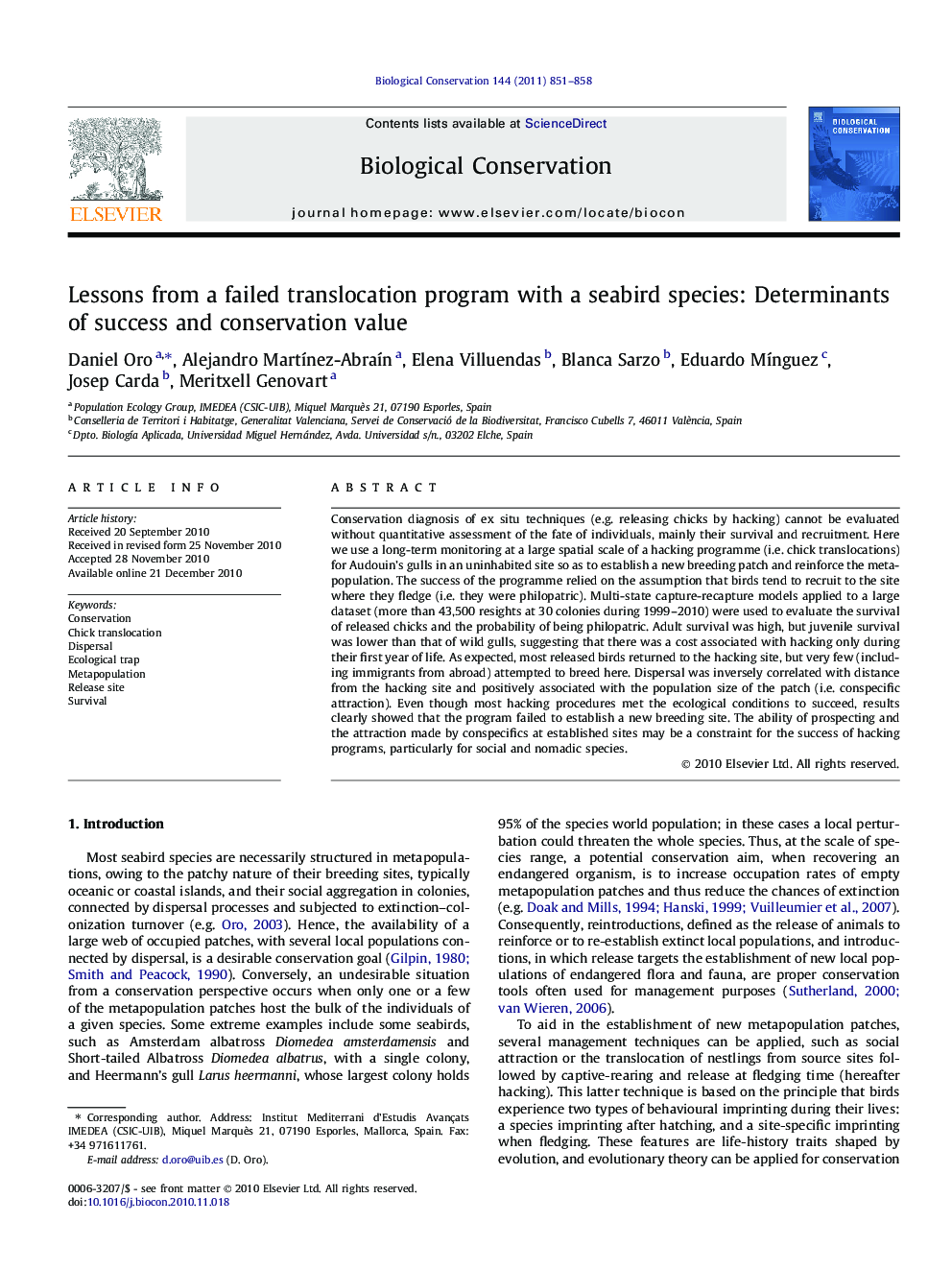| Article ID | Journal | Published Year | Pages | File Type |
|---|---|---|---|---|
| 6301261 | Biological Conservation | 2011 | 8 Pages |
Abstract
Conservation diagnosis of ex situ techniques (e.g. releasing chicks by hacking) cannot be evaluated without quantitative assessment of the fate of individuals, mainly their survival and recruitment. Here we use a long-term monitoring at a large spatial scale of a hacking programme (i.e. chick translocations) for Audouin's gulls in an uninhabited site so as to establish a new breeding patch and reinforce the metapopulation. The success of the programme relied on the assumption that birds tend to recruit to the site where they fledge (i.e. they were philopatric). Multi-state capture-recapture models applied to a large dataset (more than 43,500 resights at 30 colonies during 1999-2010) were used to evaluate the survival of released chicks and the probability of being philopatric. Adult survival was high, but juvenile survival was lower than that of wild gulls, suggesting that there was a cost associated with hacking only during their first year of life. As expected, most released birds returned to the hacking site, but very few (including immigrants from abroad) attempted to breed here. Dispersal was inversely correlated with distance from the hacking site and positively associated with the population size of the patch (i.e. conspecific attraction). Even though most hacking procedures met the ecological conditions to succeed, results clearly showed that the program failed to establish a new breeding site. The ability of prospecting and the attraction made by conspecifics at established sites may be a constraint for the success of hacking programs, particularly for social and nomadic species.
Related Topics
Life Sciences
Agricultural and Biological Sciences
Ecology, Evolution, Behavior and Systematics
Authors
Daniel Oro, Alejandro MartÃnez-AbraÃn, Elena Villuendas, Blanca Sarzo, Eduardo MÃnguez, Josep Carda, Meritxell Genovart,
